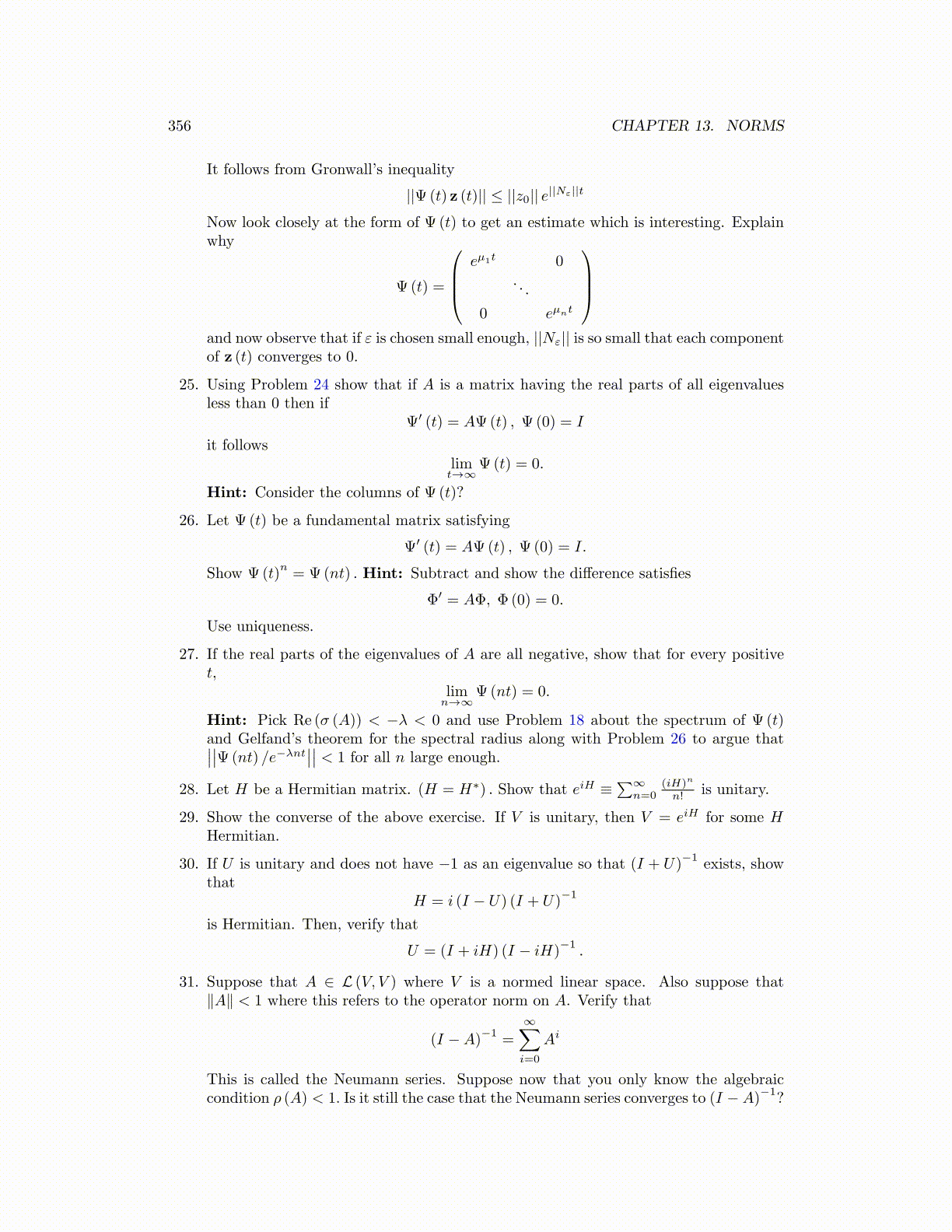
356 CHAPTER 13. NORMS
It follows from Gronwall’s inequality
||Ψ(t) z (t)|| ≤ ||z0|| e||Nε||t
Now look closely at the form of Ψ (t) to get an estimate which is interesting. Explainwhy
Ψ (t) =
eµ1t 0
. . .
0 eµnt
and now observe that if ε is chosen small enough, ||Nε|| is so small that each componentof z (t) converges to 0.
25. Using Problem 24 show that if A is a matrix having the real parts of all eigenvaluesless than 0 then if
Ψ′ (t) = AΨ(t) , Ψ(0) = I
it followslimt→∞
Ψ(t) = 0.
Hint: Consider the columns of Ψ (t)?
26. Let Ψ (t) be a fundamental matrix satisfying
Ψ′ (t) = AΨ(t) , Ψ(0) = I.
Show Ψ (t)n= Ψ(nt) . Hint: Subtract and show the difference satisfies
Φ′ = AΦ, Φ (0) = 0.
Use uniqueness.
27. If the real parts of the eigenvalues of A are all negative, show that for every positivet,
limn→∞
Ψ(nt) = 0.
Hint: Pick Re (σ (A)) < −λ < 0 and use Problem 18 about the spectrum of Ψ (t)and Gelfand’s theorem for the spectral radius along with Problem 26 to argue that∣∣∣∣Ψ(nt) /e−λnt
∣∣∣∣ < 1 for all n large enough.
28. Let H be a Hermitian matrix. (H = H∗) . Show that eiH ≡∑∞
n=0(iH)n
n! is unitary.
29. Show the converse of the above exercise. If V is unitary, then V = eiH for some HHermitian.
30. If U is unitary and does not have −1 as an eigenvalue so that (I + U)−1
exists, showthat
H = i (I − U) (I + U)−1
is Hermitian. Then, verify that
U = (I + iH) (I − iH)−1.
31. Suppose that A ∈ L (V, V ) where V is a normed linear space. Also suppose that∥A∥ < 1 where this refers to the operator norm on A. Verify that
(I −A)−1
=
∞∑i=0
Ai
This is called the Neumann series. Suppose now that you only know the algebraiccondition ρ (A) < 1. Is it still the case that the Neumann series converges to (I −A)
−1?